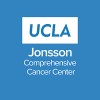
Study Investigating How Physicians Assess the Risk of Patients Developing Febrile Neutropenia During...
Chemotherapy-induced Febrile NeutropeniaThis is a prospective observational study investigating how physicians assess the risk of febrile neutropenia (FN) developing in patients who will receive chemotherapy. Approximately 150-200 investigators will take part in about 100 sites in Europe, Canada and Australia. Approximately 1000 subjects will be studied, all of whom will have non-small cell lung cancer (NSCLC), small cell lung cancer (SCLC), non-Hodgkin's lymphoma (NHL) or breast cancer and will be due to receive one of the specific chemotherapy regimens of interest. Investigators' approach to FN risk assessment will be studied using lists of possible risk factors they may consider during their assessment. Investigators will be asked to select and rank the factors they consider the most important when assessing the overall FN risk of a subject and when making the decision whether to treat with granulocyte-colony stimulating factor (G-CSF) primary prophylaxis (PP). They will be asked to make these selections based initially on their own routine clinical practise and subsequently relating specifically to each subject recruited. This is a non-interventional study that involves no procedures outside normal care for the subjects; all data collection will be completed prior to chemotherapy administration.

Observational Study With PASCALLERG ® in Patients With Hay Fever
Hay FeverThe aim of this observational study is to document the therapeutic use of PASCALLERG ® for hay fever. Based on the survey is a decrease in disease-specific symptoms when taking PASCALLERG ® over a period of 4 weeks will be documented. In addition to the compatibility can be assessed.

68Ga Citrate PET/MRI for Evaluation of Fever of Unknown Origin (FUO)
Fever of Unknown OriginThis is a Phase III study to evaluate 68Ga Citrate PET/MRI for detection of origin of fever of unknown origin.

Quantifying and Understanding the Signs and Symptoms of Fever
FeverBackground: - Fever is a common symptom of illness, but it can involve many signs (a signal that something is not right in the body that can be seen by others, such as vomiting) and symptoms (a signal that something is not right in the body that are felt only by the person, such as pain) that may differ depending on the type of illness involved. Researchers are interested in studying individuals who have a fever to examine how often these signs and symptoms are experienced by patients. Objectives: - To identify and evaluate the signs and symptoms of fever and examine their frequency in individuals who have fever. Eligibility: - Individuals at least 8 years of age who are admitted to the NIH Clinical Center and have a fever (body temperature of at least 38 degrees Celsius/100.4 degrees Fahrenheit). Design: Participants will be screened upon admission to the NIH Clinical Center. Researchers will review the Clinical Center admission records. Participants will complete a 15- to 20-minute survey with questions about how they are feeling and what symptoms they have experienced before, during and after an episode of fever.

Levofloxacin Compared With Cefepime in Treating Cancer Patients With Fever and Neutropenia
FeverSweats7 moreRATIONALE: Levofloxacin may be effective in reducing fever and controlling other symptoms of neutropenia in patients who are being treated for cancer. It is not yet known whether levofloxacin is more effective than cefepime in reducing fever and controlling symptoms of neutropenia. PURPOSE: Randomized phase III trial to compare the effectiveness of levofloxacin with that of cefepime in reducing fever and controlling symptoms of neutropenia in patients who are being treated for cancer.

Development of a Fever Detection Algorithm Based on Non-invasive Skin-based Sensor Values in Infants...
FeverFever of infants up to 18 months of age will be monitored in the hospital using the standard clinical methods and wearable research prototypes. These research prototypes will be measuring continuously and non-invasively skin based parameters, with which the feasibility of developing a fever detection algorithm will be investigated.

Cellular Immune Responses in Typhoid Fever Patients and Vaccinees
Typhoid Fever Patients and Healthy Volunteers to Receive Typbar-TCV VaccineTyphoid fever caused by Salmonella Typhi and Paratyphi causes over 21 million cases of febrile illness and 200,000 deaths are attributed to enteric fever each year. Typhoid fever is an enteric infection that results in febrile illness. Typhoid fever causes significant morbidity in the developing world especially young children.S. Typhi specific antibody responses are elicited in typhoid fever and following typhoid vaccination. Cross-reactive multifunctional CD+4 T cell mediated IL-17 responses have been shown in typhoid fever. As S. Typhi as an intracellular pathogen, cellular immune responses might be central to protection. S. Typhi peptide subunit vaccine elicits CD+4 T cell responses that correlate with protection in mice. The role of mucosal associated invariant T cell (MAIT) and natural killer (NK) cell responses in typhoid fever or following vaccination remain poorly understood. Transcriptome profiling of human immune responses to S. Typhi infection is not clearly understood. Establishing successful infection by S. Typhi evasion of T cell and neutrophil responses need to be investigated to better understand the correlates of protection.

Inflammatory Proteins in Familial Mediterranean Fever During Attack and Remission
Familial Mediterranean FeverFamilial Mediterranean fever (FMF) is a genetic disease, caused by mutations in the FMF gene, entitled MEFV. The disease is characterized by painful attacks of inflammation in sites lined by serous membranes (e.g. abdominal pain caused by inflammation of the peritoneum, a serous membrane surrounding all internal organs within the abdomen). Continuous colchicine treatment prevents attacks in most patients. The pathogenesis of the disease, what leads to the attacks and how colchicine helps, are questions not yet resolved. Elucidating the role of the inflammatory proteins is an important step towards the understanding of these questions. To date only small numbers of cytokines and inflammatory proteins have been studied individually. We propose to study a large number of these proteins in the RNA and protein levels addressing the interaction between them and the effect of colchicine on their expression. Blood samples will be drawn from consenting patients in remission, during attacks, under and without colchicine treatment. (20 patients in each category).Twenty healthy volunteers will donate control blood samples for the study. RNA will be produced from the neutrophils, and cytokines and various proteins' RNA expression will be determined. Major expressed proteins will be measured in the same samples and the results will be analyzed with regard to the activity of the disease, MEFV mutations and colchicine treatment status. The information obtained by the study may allow us to determine the sequence of events associated with FMF attack development, and perhaps take us one step further in the understanding of the pathogenesis of the disease.

Treatment of Pneumonia, Diarrhoea and Fever in Children by Community Health Workers
PneumoniaDiarrhea1 moreThe investigators propose to test the feasibility and acceptability of community health workers (ASHAs and ANMs) being able to treat sick children in the community. There is a national policy for treatment for children aged 2-59 months with illnesses such as pneumonia, diarrhea and fever by community health workers (CHWs), this policy has not been implemented as yet in Haryana. This research will identify barriers and opportunities for use of CHWs as treatment sources.

Filter Paper Blood Spots Collected During Fever as a Source for Post-travel Diagnosis in Travelers...
FeverThis study is part of a larger prospective cohort study (JOKA), designed to study febrile illness occurring during a travel to the tropics, as well as the evaluation of the clinical use of malaria rapid diagnostic tests (RDT) by travelers or their peers during travel, as a decision aid for the management of febrile illness in the tropics. Filter paper blood spots and paired serology are used in addition to routine post-travel evaluation, to study the incidence and etiological spectrum of febrile illness occurring during travel to the tropics. The study will yield valuable and prospective data of incidence rate, the clinical and etiological spectrum, clinical course and outcome of febrile illness during (and post-)travel in a prospective cohorts of travelers. This knowledge may lead to better pre-travel advice.
